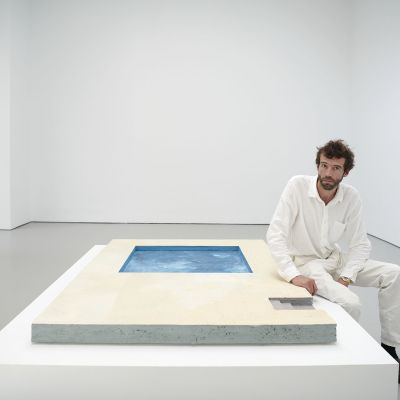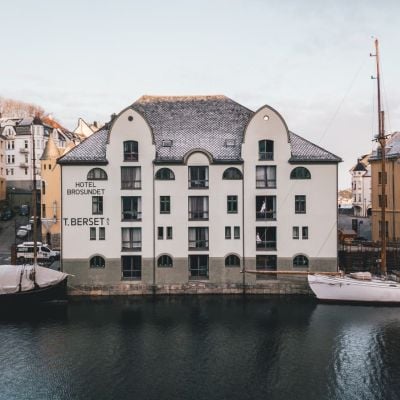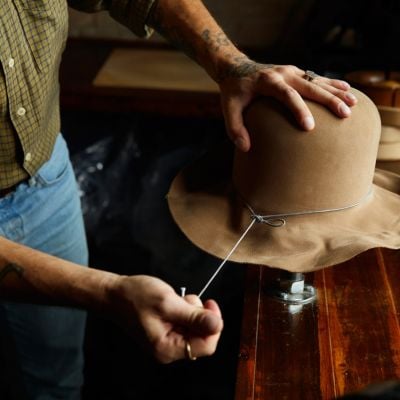Sophisticated Decadence: The Franklin Hotel

Old spaces speak to the soul. When renovating an old space, a good designer will amplify that voice to give it clarity.

This is the case at The Franklin Hotel, Knightsbridge, originally built as a classic Victorian house in the 1840s, and recently reimagined by Anouska Hempel, Lady Weinberg.
Located on the quiet, residential redbrick Victorian road, Egerton Crescent, designed by the Georgian architect George Basevi, if it weren’t for the discreet flag outside, you could mistake it for a townhouse. When you enter, it feels like a sophisticated home more than a hotel. There is no reception lobby, only a couple of friendly young staff hovering over MacBooks on a table.

I am offered a refreshment; my bags whisked away. I take a seat at the cool hexagonal black-and-white Carrara marble table, a signature of Hempel, one of Architectural Digest’s Top 100 World Designers and Architects. She is the designer behind Blakes Hotel, the famously decadent London five-star considered the godfather of the boutique hotel.
The Franklin, whilst somewhat more pared-back, still rings with this signature sensuality. Hempel takes inspiration from her travels, combining Eastern influences with echoes of Italy and Morocco, and the spirit of a glorious bygone era. There is drama in the entrance, all monochrome marble and black-and-white silk Ikaat-printed curtains from Istanbul, floor to ceiling Venetian screens, grey velvet chairs by Rubelli and frosted mirrors everywhere. Both La Belle Époque and Art deco are conjured in the mind at once.

The two-year renovation of the hotel after it was acquired by Florence-based Starhotels in 2014, was firmly a joint vision between Hempel and Elisabetta Fabri, the family principal of the private luxury hospitality group founded by her father Ferruccio Fabri.
The wrought iron balustrades which recall typical English greenhouses, was the original inspiration that Elisabetta Fabri shared with Hempel, and Fabri also sourced the many pressed framed flowers and herbs that hang in mirrored frames above the four poster beds. With Hempel, her vision was to make The Franklin a meeting point between the elegance of Italian design and the charm of the English Victorian era.

Speaking about the design inspirations for The Franklin, Anouska Hempel said: “The English love the Italians. The romance of Rome and Venice, all combined, opposite the Brompton Oratory, have become...dark brooding greys and bright sparkling whites: floors of Carrara marble and slate, Venetian wells, piazzas, squares, dark greys with white punctuations.”
Half of the 35 suites face onto the historic Brompton Oratory, and the others, including the one I am staying in, onto the peaceful private lawns of Egerton Gardens, dotted with espaliered pear trees and pretty pink rose bushes. There is a glamorous resident's-only Hammam, instead of a spa, and a fitness studio with state of the art Technogym equipment.
Within a five minute walk is the lush greenery of Hyde Park and the fabulous pomp of the V&A Museum, not to mention Knightsbridge’s most prestigious shopping district with Harrods, Hamleys and Harvey Nichols and every designer you could think of from Jimmy Choo to Lulu Guiness.
But for shopping, you could also just stay inside your room. Ever since the days of Blakes, guests frequently request to 'take home the bedside lamps' or other pieces from the rooms, so that Hempel has launched a new interiors range, the Hempel House & Hotels collection. Now the suites at The Franklin and her other iconic hotels are fully 'shoppable', including the newly reopened Duxton Reserve on Duxton Hill in Singapore and in Paris, the new Monsieur George just off the Champs Elysées. Furniture, furnishings, fittings, fans, beds, lamps and mirrors are just some of the treasures available in this new collection, and very little is off limits.

At The Franklin, guests cannot fail to notice an enigmatic tribute. The walls are lightly decorated with the name ‘Joseph Herrmann, 1907’ stencilled on the bedroom walls, in the library and even the glamourous free-standing bath tubs.
This curious nod to the history of the building offers up a clue to its identity. Joseph Herrmann was, according to a member of staff, as she gives me a tour, a member of the clergy and the secret lover of Lord Egerton, the nobleman whom the street was named after. Also an active philanthropist, he lived in the house for a while and 1907 was the year that he died.
It’s a story which conjures elicit glances and passionate reunions; emotions that The Franklin expertly retells, over and over again.









